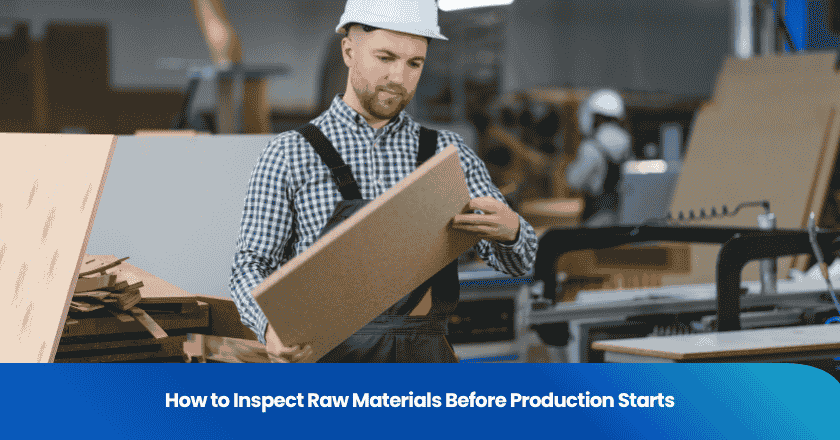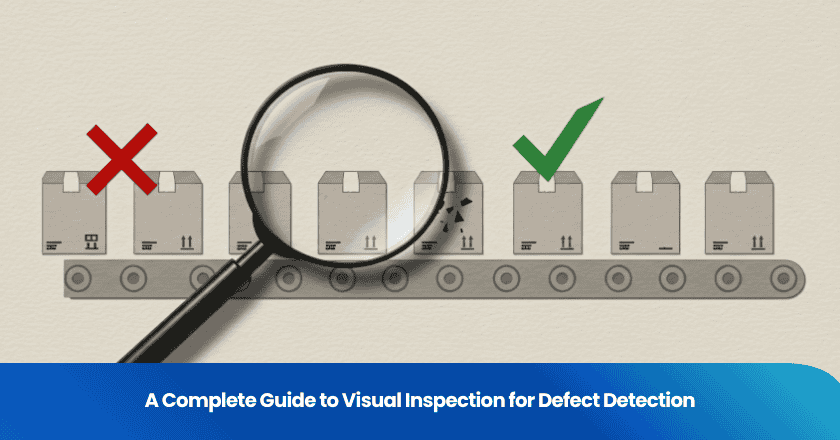
Quality control (QC) is a crucial aspect of electronic product manufacturing, ensuring that products meet specification requirements and avoiding the emergence of defective products. An effective quality control system can reduce waste, enhance product reliability, and improve customer satisfaction.
With the expansion of production scale and the increase in complexity of electronic products, selecting appropriate quality control methods is crucial for maintaining high quality standards and production efficiency.
In the electronics industry, quality control can prevent costly recalls, defective products, and damage to brand reputation. Whether it's producing smartphones, laptops, or circuit boards, every product must meet strict safety, functionality, and performance standards. Quality control ensures that each product adheres to design specifications and functional requirements.
This article will explore the main quality control methods applicable to the production of electronic products, the considerations when selecting methods, and provide practical suggestions for implementing these strategies.
Understand different quality control methods
There are numerous methods to ensure the quality of electronic products, including inspection-based methods, testing methods, automated systems, and statistical methods.
Each method has its own advantages and disadvantages, and selecting the appropriate method depends on the specific production environment and product type.
Method based on inspection
The quality control method based on inspection involves visual inspection of products during and after production. This method can detect defects such as physical damage, misalignment, or improper assembly. It is highly effective in identifying obvious and easily recognizable issues, but may struggle to detect more subtle problems, such as electrical faults or long-term performance degradation.
Test-based method
Testing is a more comprehensive quality control method that ensures products meet performance standards through functional testing. This may include testing the voltage integrity of circuit boards, verifying software functionality, or conducting stress tests on components to simulate real-world usage scenarios. Testing-based methods can identify issues that are invisible to the naked eye, but often require a longer time.
Statistical Process Control (SPC)
Statistical process control employs statistical tools to monitor and control the production process. By analyzing data on process variation, manufacturers can predict potential issues and make adjustments before defects occur. This method is particularly effective in large-scale production environments, where continuous monitoring is required to ensure consistency.
Automated Quality Control (AQC)
Automated quality control methods utilize machines and robots to inspect, test, and even adjust the production process. With the development of artificial intelligence and machine learning, automated systems are capable of detecting defects in real-time, significantly enhancing inspection speed and reducing human errors. However, implementing automated quality control requires substantial upfront investment in technology and infrastructure.
Reliability testing
Reliability testing evaluates the long-term durability of a product by exposing it to extreme conditions such as temperature variations, humidity, or vibration. This testing is particularly crucial for ensuring the reliable operation of electronic products throughout their expected lifespan, especially in places where they may face harsh environments.
Factors to consider when selecting quality control methods
When selecting a quality control method, it is necessary to comprehensively consider multiple key factors to ensure that the chosen method not only meets product requirements but also facilitates an efficient and economical production process.
Below is an explanation of each factor:
Electronic product type:
The quality control requirements for different types of electronic products vary significantly.
Consumer electronic products, such as smartphones, which are directly targeted at consumers, not only need to possess excellent functionality but also require an attractive appearance. These products typically undergo comprehensive functional testing to ensure the proper functioning of various features, as well as meticulous appearance inspection to eliminate any flaws that may affect consumers' purchasing decisions. In contrast, quality control for industrial electronic products, such as circuit boards, focuses more on reliability testing and automated inspection methods. These products often need to operate stably for extended periods in harsh environments, necessitating rigorous reliability testing to verify their durability. Automated inspection methods can enhance detection efficiency and ensure consistency in the production process.
Production volume and production scale:
Production volume and scale are also factors that cannot be ignored when selecting quality control methods.
For high-volume production, to maintain consistency and efficiency, there is often a greater reliance on statistical methods and automated systems. These methods can quickly and accurately process large amounts of data, promptly detecting anomalies in the production process, thereby ensuring product quality. For lower-volume or customized products, due to the smaller production batches, manual inspection or testing methods may be more cost-effective and flexible. Manual inspection allows for customized checks based on specific product characteristics, ensuring that each product meets quality standards.
Budget and cost-effectiveness:
Cost is always an important factor that enterprises must consider when choosing quality control methods.
Although automated systems and comprehensive testing can provide high precision, they often require significant initial investments, including equipment procurement, installation and commissioning, as well as subsequent maintenance costs. For manufacturers with limited budgets or smaller scales, they may prefer to choose methods based on inspection and testing. These methods can reduce initial investment costs and improve cost-effectiveness while ensuring a certain level of quality.
Regulatory and compliance requirements:
Many electronic products must comply with specific industry standards and regulatory requirements, such as UL certification or CE marking.
Standards and regulations stipulate the basic performance requirements of products, covering multiple aspects such as safety and environmental protection. When selecting quality control methods, it is necessary to fully consider the requirements of the market and industry in which the product is located, ensuring that the selected methods meet relevant regulations and compliance requirements. Enterprises should avoid legal risks and economic losses caused by non-compliance with regulatory requirements.
Product complexity and sensitivity:
For complex or sensitive products, such as medical equipment or aerospace components, the quality control requirements are particularly stringent.
Products are crucial to the safety of users and may involve high research and development costs as well as complex production processes. When selecting quality control methods, it is essential to consider more in-depth testing, higher-precision inspections, and more comprehensive verifications. These measures can ensure that products maintain high levels of safety and functionality throughout the research, development, production, and use processes, meeting customer expectations and requirements.
Key quality control techniques in the production of electronic products
In the production of electronic products, quality control is a crucial aspect to ensure product performance, reliability, and user satisfaction.
Below are detailed descriptions of several key quality control techniques, aimed at helping everyone better understand and apply these techniques to enhance product quality and market competitiveness.
Production line inspection
Production line inspection is an indispensable part of the electronic product production process, permeating throughout the entire production workflow. The core objective of the inspection method is to identify defects in the production process as early as possible, preventing these defects from affecting subsequent production steps or the quality of the final product. Production line inspection is particularly effective in detecting defects during the assembly process, such as component misalignment, poor connections, or assembly errors. By establishing multiple inspection points on the production line and deploying professional inspectors or automated detection equipment, the production status can be monitored in real-time, enabling timely identification and correction of issues, thereby ensuring the smooth progress of the production process.
Functional testing
Functional testing is a crucial step in verifying whether an electronic product works as intended. By simulating actual user scenarios, functional testing can comprehensively evaluate the product's various functional performances, ensuring that the product functions properly before being delivered to users. Functional testing typically requires the use of specialized testing equipment and software to simulate various usage conditions and operational scenarios, ensuring the accuracy and reliability of the testing.
Visual inspection
Visual inspection is a rapid and cost-effective quality control method that focuses on detecting appearance defects in electronic products. These defects may include scratches, uneven color, alignment issues, or surface stains. Visual inspection cannot ensure the functional quality of the product, but as a preliminary screening method, it can effectively identify those obvious surface issues, preventing them from affecting the overall image and user experience of the product. Visual inspection is usually performed by trained inspectors who, with their rich experience and keen observation skills, can quickly and accurately identify appearance defects.
Burning machine test
Burn-in testing is a quality control method that exposes electronic products to prolonged usage conditions. By simulating the working environment and conditions of the product in actual use, burn-in testing can detect early failures that may only manifest after a period of use. This testing is particularly important for catching potential reliability issues, helping manufacturing companies identify and address problems that may cause product failures during use in advance, thereby enhancing the reliability and durability of the product. Burn-in testing usually requires several hours or even days to ensure the accuracy and reliability of the test results.
Terminal testing
Terminal testing is a comprehensive functional inspection conducted after the final assembly of electronic products. Its primary objective is to ensure that all functions of the product operate normally without any defects or issues before it is delivered to customers. Terminal testing typically encompasses all functional modules of the product, including both hardware and software components, to guarantee the overall performance and stability of the product. In consumer electronic products, terminal testing is particularly crucial as it directly impacts the user experience and satisfaction. Through rigorous terminal testing, manufacturing enterprises can ensure that every product delivered to customers is fully verified and tested, thereby earning the trust and praise of users.
END
Through this article, you can understand that when selecting appropriate quality control methods for electronic product production, factors to consider include product type, production volume, budget, and compliance requirements. An appropriate quality control strategy ensures that products meet customer expectations and regulatory requirements, enhancing product reliability and customer loyalty. By carefully selecting suitable quality control methods, electronic product manufacturers can improve production efficiency, reduce defects, and enhance overall product quality.
Grow your business with TradeAider Service
Click the button below to directly enter the TradeAider Service System. The simple steps from booking and payment to receiving reports are easy to operate.



